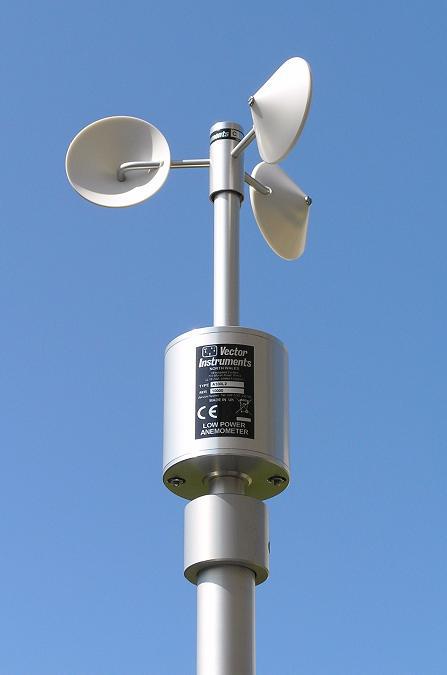Anemometers Introduced: Recognizing Their Significance in Ecological Surveillance and Precaution
The role of anemometers in ecological surveillance and safety and security actions is frequently ignored, yet their importance is undeniable. These instruments have a long history rooted in clinical questions and technical improvements, developing to come to be vital tools in various areas. From weather forecasting to air travel security, anemometers play an important role in providing exact data that informs decision-making procedures and improves overall safety and security. Recognizing the complexities of anemometers unveils a world of crucial understandings that are essential to our understanding of the environment and the actions we require to ensure safety and security.
History of Anemometers
The advancement of anemometers can be mapped back to the ancient people where basic wind measuring tools were very first used. One of the earliest recognized anemometers was the hemispherical cup anemometer developed by Leon Battista Alberti in the 15th century.
In the 18th century, the renowned researcher John Thomas Romney Robinson introduced the Robinson anemometer, which included 4 hemispherical mugs placed on horizontal arms that extended from a central axis. This style ended up being a criterion in atmospheric dimensions because of its accuracy and reliability. Throughout the years, improvements in modern technology brought about the development of more modern anemometers, consisting of ultrasonic anemometers and laser Doppler anemometers, offering increased precision and performance in gauging wind rate and instructions. The background of anemometers showcases an impressive trip of technology and progression in the area of weather forecasting.
Types of Anemometers
Throughout the field of weather forecasting, various kinds of anemometers have actually been established to properly measure wind speed and instructions. Sonic anemometers use ultrasonic signals to determine wind rate and direction precisely. Hot-wire anemometers run based on the concept that the cooling effect of wind on a warmed cord is proportional to the wind speed.
Applications in Weather Forecasting
Having discussed the different kinds of anemometers made use of in weather forecasting for gauging wind rate and instructions, it is important to explore their functional applications in the area. Anemometers play a crucial role in meteorology by offering real-time and precise data on wind conditions (anemometer). Meteorologists utilize anemometers to keep track of wind speed and direction to anticipate weather condition patterns, problem warnings for extreme weather condition occasions like tornados, cyclones, and twisters, and examine weather for aviation safety and security
In weather forecasting, anemometers assist in comprehending regional and regional wind patterns, which are crucial for predicting weather adjustments and determining weather patterns. These devices are additionally utilized in research study to study microclimates, city warmth islands, and air pollution dispersion. In addition, anemometers are utilized in farming to maximize crop monitoring methods, such as irrigation and chemical application, based on wind problems.
Value in Aviation Safety And Security
An indispensable aspect of making certain air travel safety exists in the precise surveillance of wind conditions making use of anemometers. Anemometers play a critical function in air travel by offering real-time information on wind speed and instructions, aiding pilots in making educated decisions during trip, liftoff, and landing. Solid and unforeseeable winds can substantially impact airplane procedures, making it necessary for aviation authorities to depend on precise wind dimensions to guarantee the safety and security of travelers and crew.

In the vibrant setting of air travel, where also minor modifications in wind rate and direction can have extensive results, anemometers stand as important devices for promoting risk-free and secure flight.
Function in Environmental Study
How do anemometers add to advancements in environmental research study? Anemometers play a crucial function in ecological study by giving essential information on wind rate and direction. This information is crucial for recognizing various atmospheric processes, such as air pollution diffusion, weather patterns, and environment adjustment. By precisely gauging wind qualities, anemometers aid researchers evaluate the motion of contaminants airborne, analyze the influence of industrial emissions, and why not find out more predict the spread of pollutants in the atmosphere.


Verdict
In conclusion, anemometers have actually played a crucial role in ecological surveillance and precaution. With an abundant history and different types available, these tools have actually been commonly utilized in meteorology, aviation safety, and ecological research study. Comprehending the importance of anemometers is vital for precisely determining wind speed and instructions, which is vital for anticipating climate patterns, guaranteeing safe aviation procedures, and carrying out environmental researches - anemometer. Their contributions to these fields can not be underestimated.
One of the earliest well-known anemometers was the hemispherical cup anemometer developed by Leon Battista Alberti in the 15th century. Over the years, developments in modern technology led to the advancement of even more modern anemometers, consisting of ultrasonic anemometers and laser Doppler anemometers, supplying boosted accuracy and efficiency in determining wind rate and direction. Hot-wire anemometers browse around this web-site run based on the concept that the cooling effect of wind on a warmed cord is proportional to the wind speed. Meteorologists make use of anemometers to monitor wind speed and instructions to anticipate weather patterns, problem cautions for severe weather occasions like tornados, cyclones, and hurricanes, and examine climatic problems for aeronautics safety.
Understanding the importance of anemometers is necessary for properly gauging wind rate and instructions, which is vital for predicting weather patterns, guaranteeing risk-free air travel operations, and carrying out environmental research studies. (anemometer)